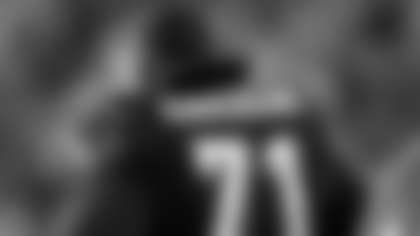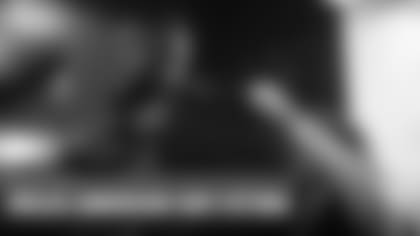By Geoff Hobson
Slimmed down Willie Anderson isn't the "Big Willie," of his size 54-56 playing days, as his 50-51 Ring of Honor suit jacket attests.
But the 18 triple E shoes haven't changed, which is just as well since he left one of the biggest footprints in Bengals history as the best right tackle of his time. The season-tickets holders' selection of him and rules-changing wide receiver Isaac Curtis to the Bengals' second Ring of Honor class didn't hit him until he took a call at his jacket fitting from current University of Kentucky senior associate athletic director Ray "Rock," Oliver, one of his NFL strength coaches.
"Ray said, 'Do you realize you're in just the second class ever and your name is going to be on the stadium forever?'" Anderson recalls. "To be only the fifth and sixth guys to go in and to go in with someone like Isaac Curtis, a guy I've learned in the last 20 years how big time he was. The first No. 85. Just being a part of that with him, I was sure pumped. It gave me goose bumps when Ray said that."
It's fitting that the man believed to have the biggest foot in Bengals history is the first from the Paul Brown Stadium Era to step into the Ring and have his name and No. 71 added to the building's east façade. When PBS opened in 2000, Anderson was in his fifth season and at the height of his Hall-of-Fame powers that blended dancing bear agility with massive road grader strength.
From game action to Bengals 50 and everything in between, view the best of Willie Anderson over the years.
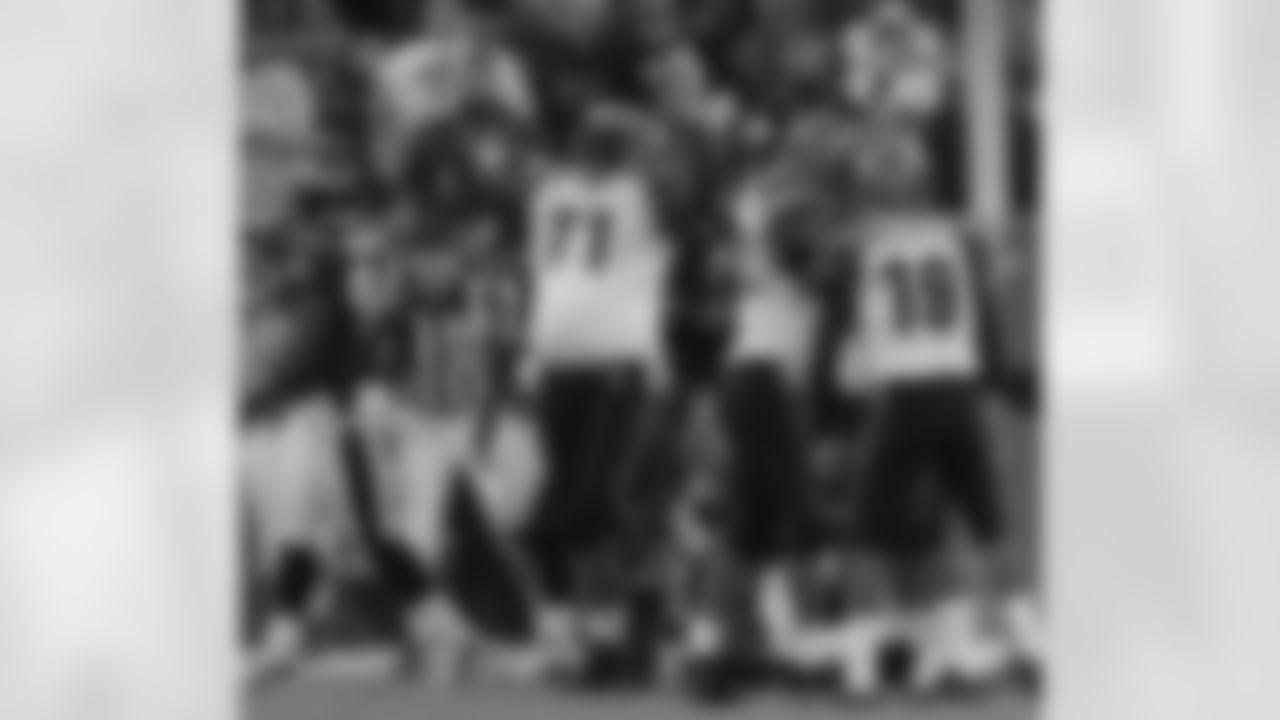
Cincinnati Bengals tackle Willie Anderson, center, celebrates with teammates Reggie Kelly, second from right, and Kyle Larson, right, after Bengals' Shayne Graham, not shown, kicked the game-winning field goal as time expired against the Baltimore Ravens, Sunday, Dec. 5, 2004, in Baltimore. The Bengals won 27-26. (AP Photo/Chris Gardner)

Former Cincinnati Bengals player Willie Anderson announces a pick during the second round of the 2019 NFL Draft on Friday, April 26, 2019, in Nashville, Tenn. (Perry Knotts via AP)
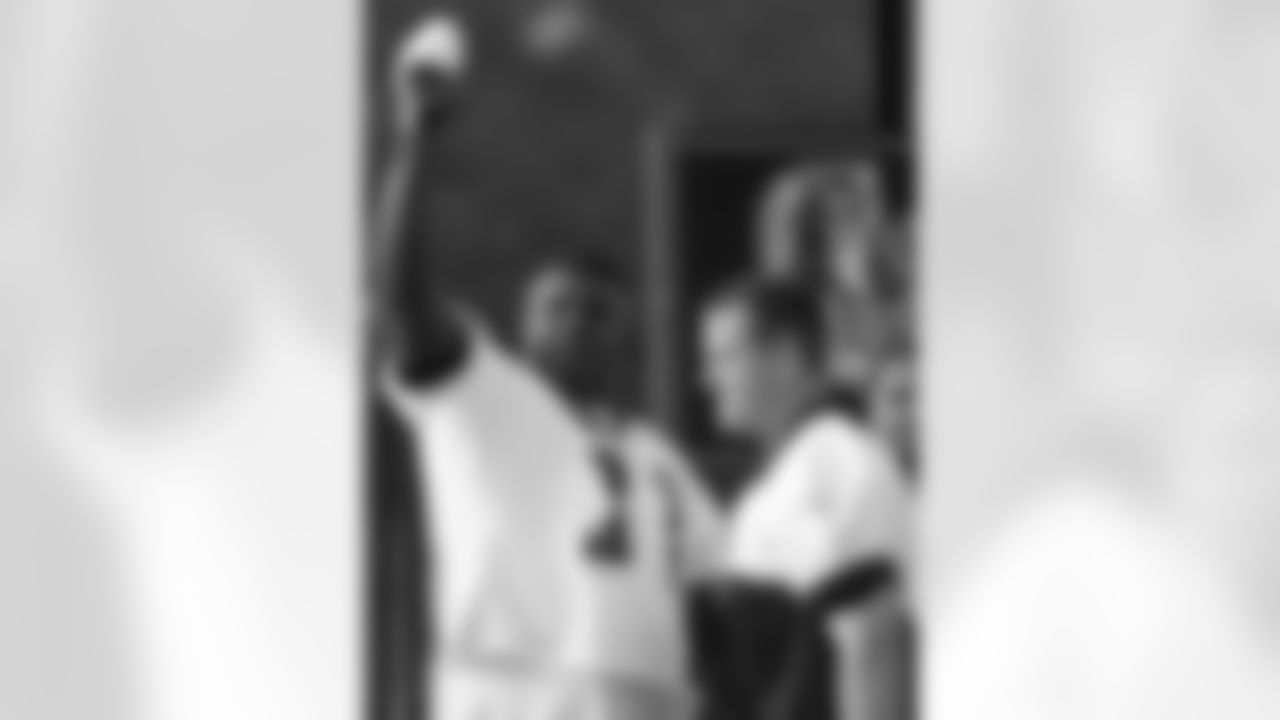
Cincinnati Bengals tackle Willie Anderson, left, urges on the crowd as they cheer for quarterback Carson Palmer, right, at the start of practice, Saturday, July 29, 2006, at training camp in Georgetown, Ky. Palmer is recovering from surgery to his left knee that was rebuilt in January. (AP Photo/Al Behrman)
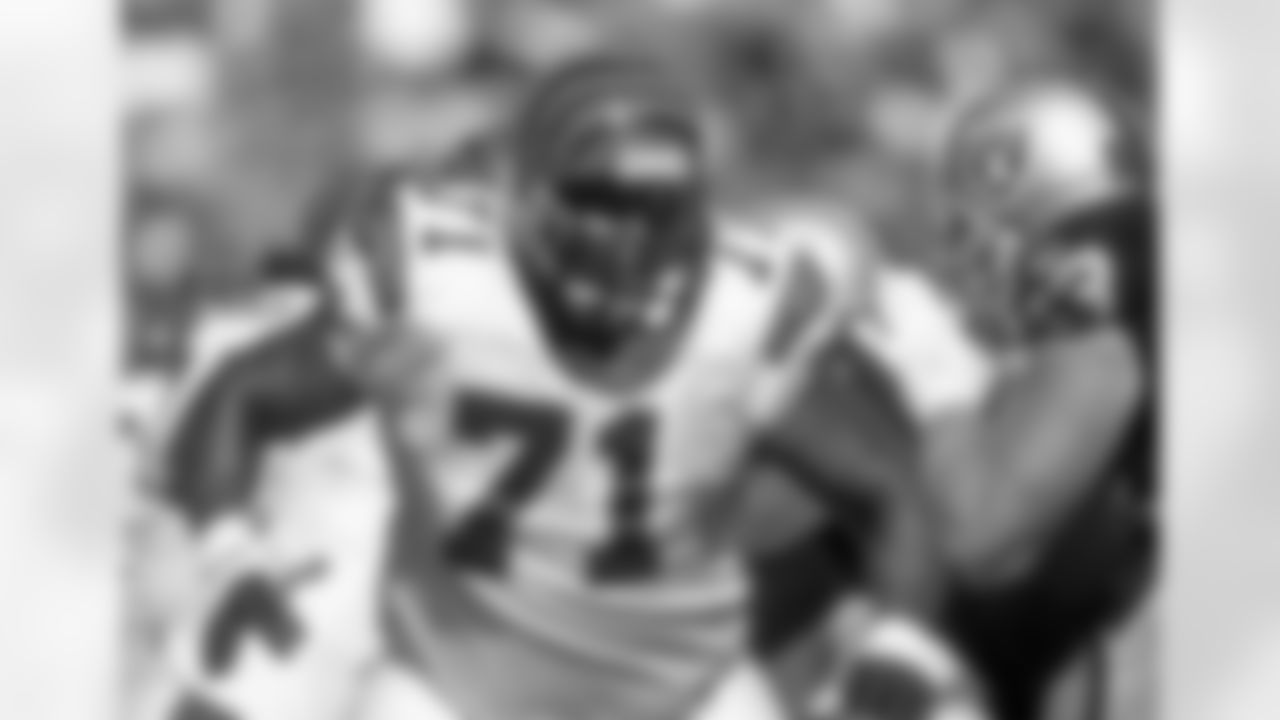
Cincinnati Bengals offensive lineman Willie Anderson (71) pass blocks during an NFL football game against the Oakland Raiders on Sunday, Sept. 14, 2003, in San Francisco. The Raiders won the game, 23-20. (AP Photo/Greg Trott)
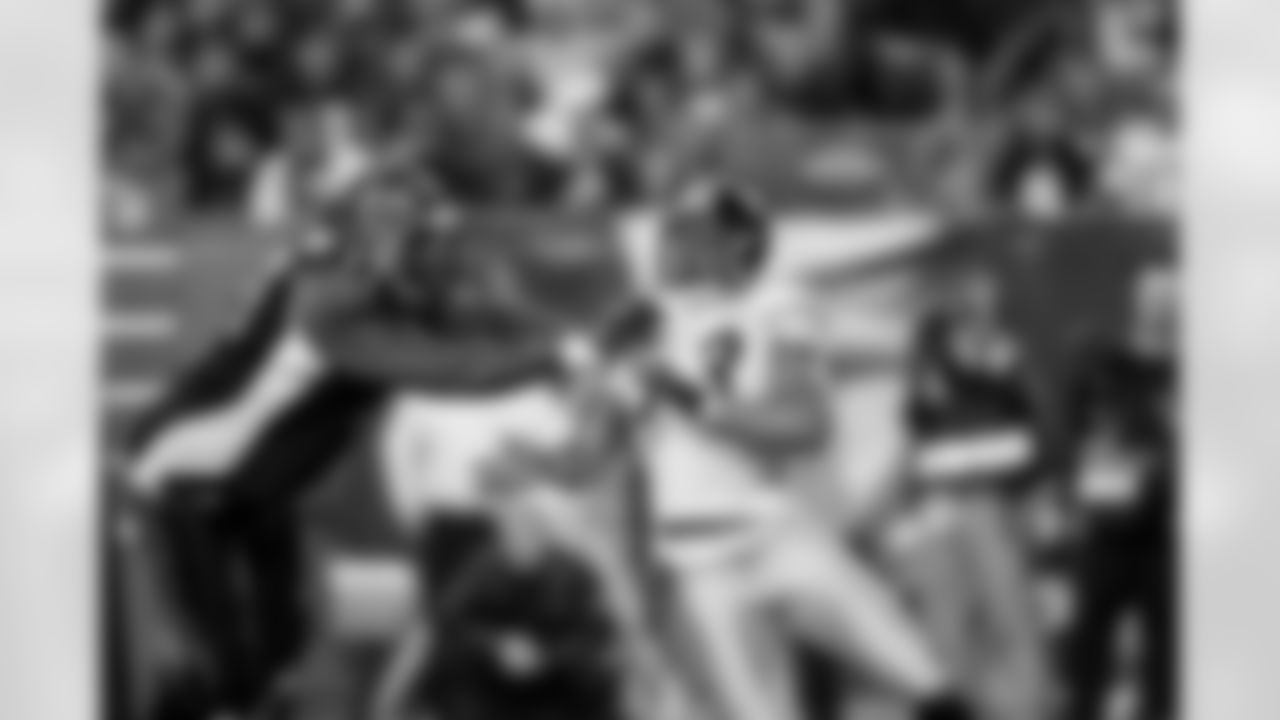
Pittsburgh Steelers linebacker Clark Haggans rushes around Cincinnati Bengals Willie Anderson during an AFC wild card football game in Cincinnati on Jan. 8, 2006. The Steelers won 31-17. (G. Newman Lowrance via AP)

Former Cincinnati Bengals player Willie Anderson takes a selfie with fans during the Super Bowl LVI Opening Night Fan Rally Monday, Feb. 7, 2022, in Cincinnati. (AP Photo/Jeff Dean)
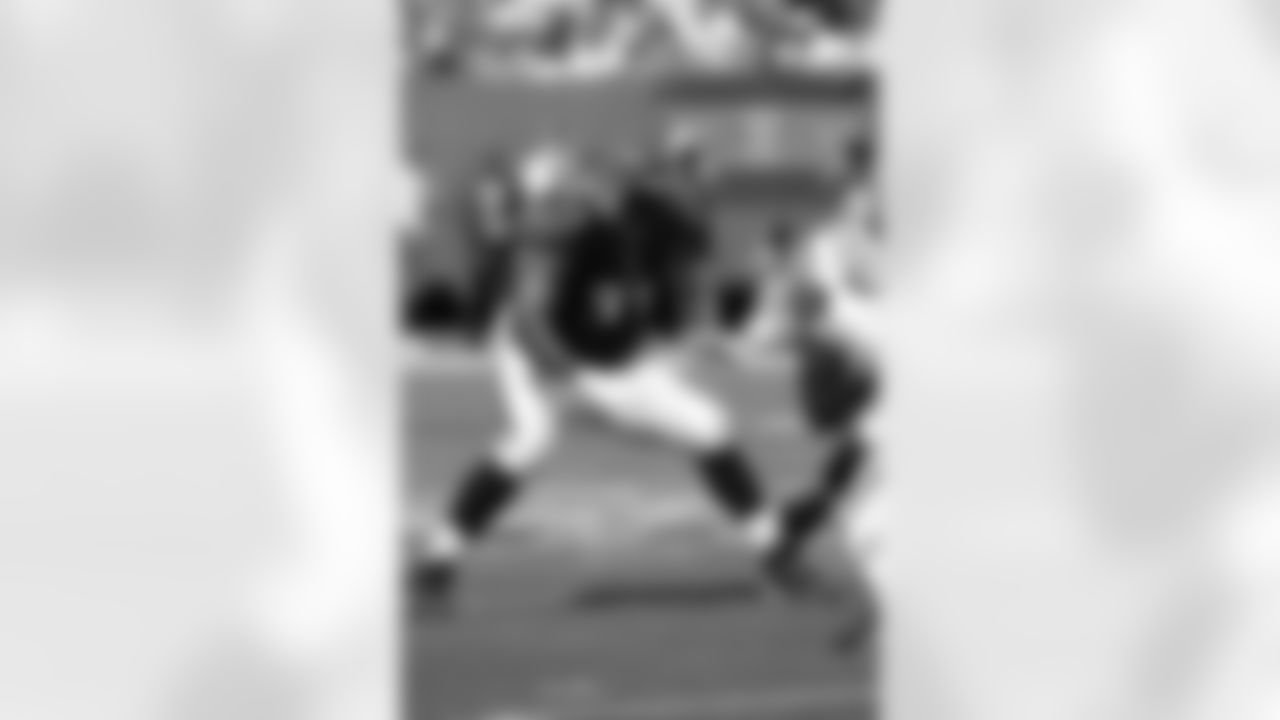
Offensive tackle Willie Anderson #71 of the Cincinnati Bengals drops back to pass block in the 2004 season opening game against the New York Jets at Giants Stadium on September 12, 2004 in East Rutherford, New Jersey. The Jets defeated the Bengals 31-24. (AP Photo/Paul Spinelli)
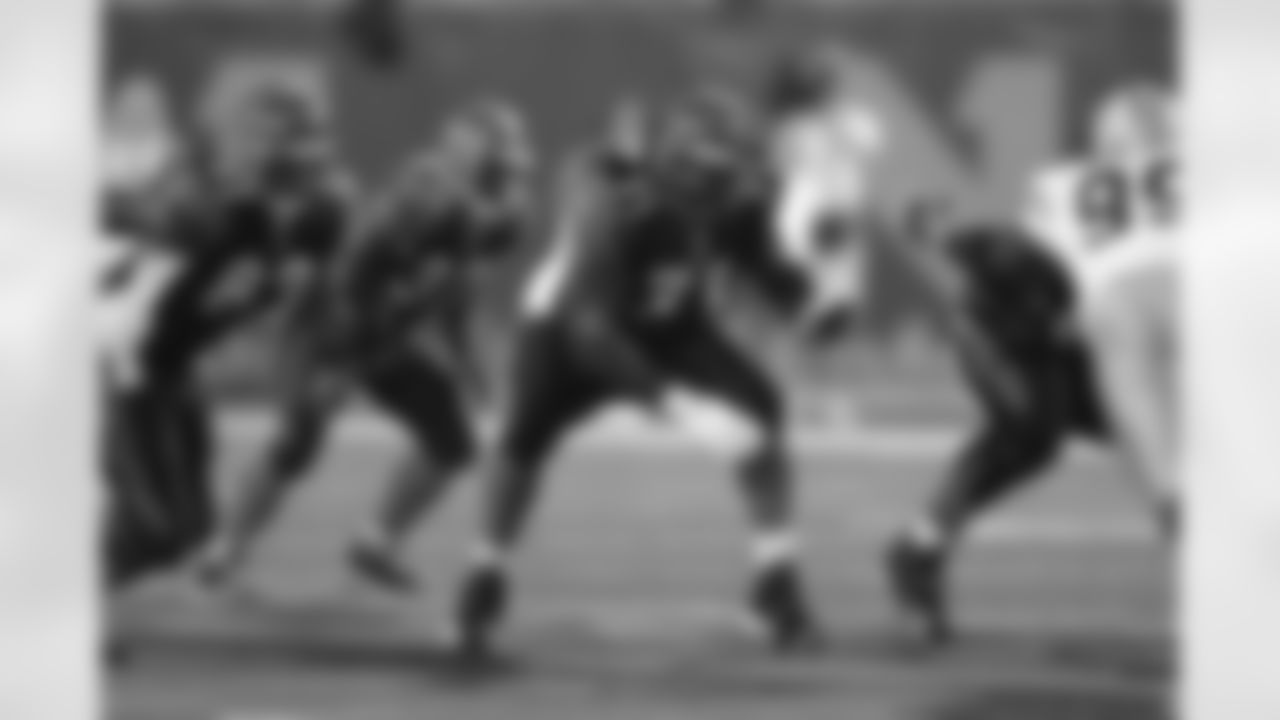
CINCINNATI - AUGUST 28: Tackle Willie Anderson #71 of the Cincinnati Bengals blocks against the Green Bay Packers at Paul Brown Stadium on August 28, 2006 in Cincinnati, Ohio. The Bengals defeated the Packers 48-17. (AP Photo/Scott Boehm)
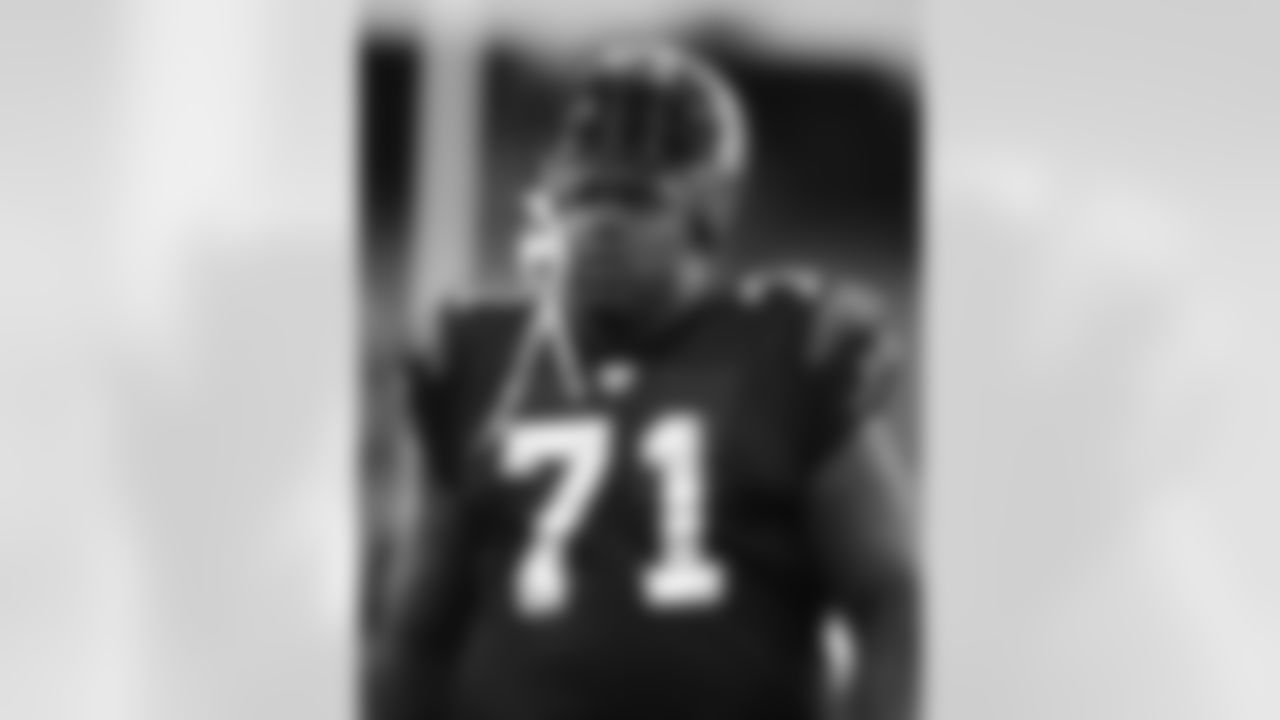
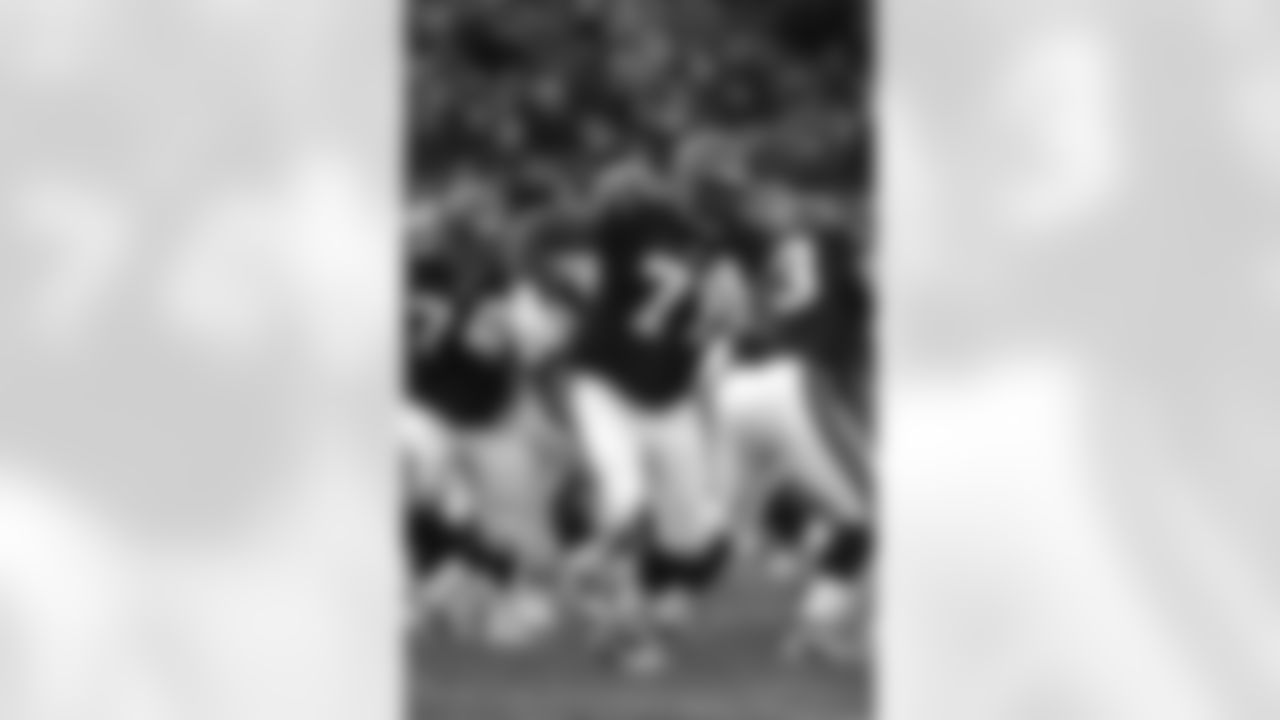
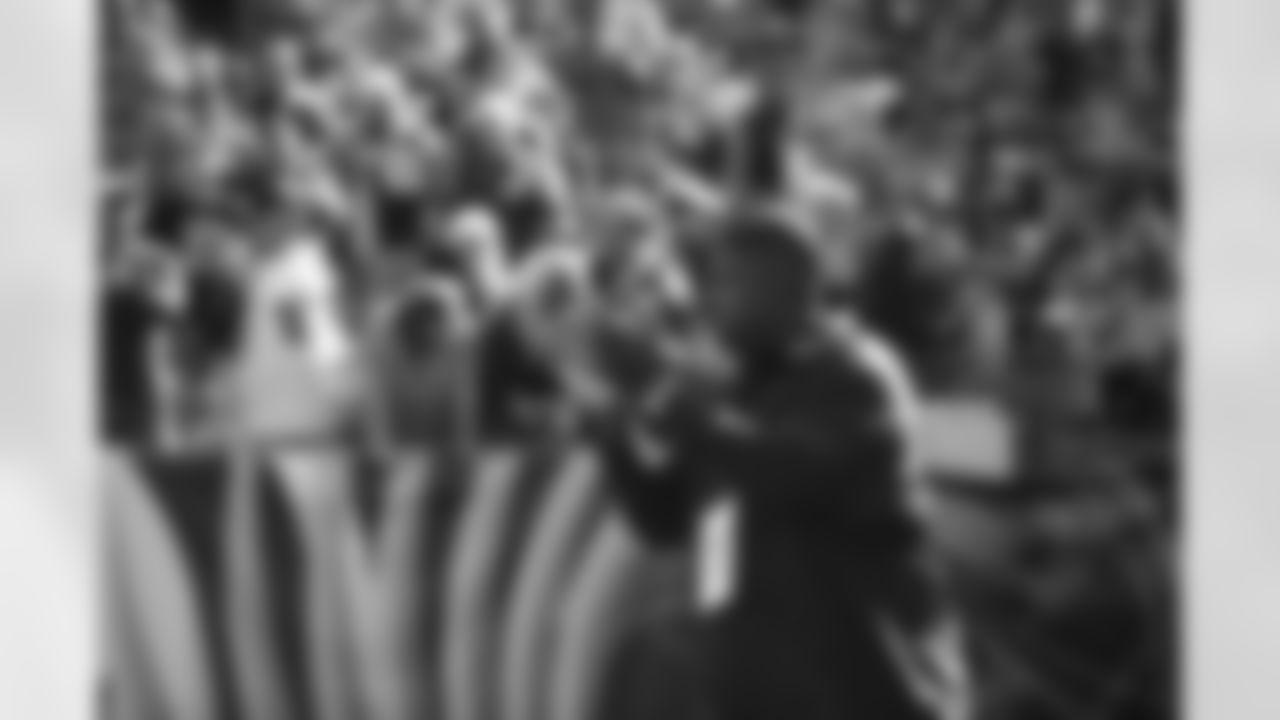
He began the century signing the richest contract ever for an offensive lineman and was in the process of allowing just 16 sacks in his 13 seasons. In 17 games against 11 of the top 12 sackers of all-time, Anderson allowed one sack and that was to all-time leader Bruce Smith in the last seconds of a rout in Anderson's rookie year of 1996.
But it was that 2000 season that proved he was just as dominant in the run game. During that season, Bengals running back Corey Dillon rushed for 1,435 yards on 4.6 yards per carry for a team whose No. 1 quarterback averaged 4.7 yards per pass.
With Anderson paving the way on many of his 22 carries during a day the Bengals completed two passes, Dillon broke one of the NFL's hallowed marks when he took down Walter Payton's 23-year-old single-game rushing record with 278 yards in the Bengals' first PBS win.
"I consider him to be right there as the best right tackle of his generation," Pro Football Hall of Fame rusher Michael Strahan told Bengals.com last year. "When I found out Willie wasn't in the Hall of Fame, I was surprised. Unbeatable."
It would take the arrival of head coach Marvin Lewis in 2003, but that win over the Broncos ordained that The Paul would rock with many significant moments.
"The 2000s were a turning point in the organization. You could see the needle move and start to go to the other side," says the newly-bearded Anderson, a svelte 310 pounds, down 40 pounds from his playing days. "That started with Marvin getting here and guys buying into his system."
Anderson, an offensive line savant with a sharp wit, emerged as Lewis' quintessential locker-room leader. It's also fitting that the Ring's first 21st century player is one of the most readable and popular Bengals on Twitter.
"I was publicly saying it when they announced (the Ring) last year," Anderson says. "I was saying I think a lot of the older guys should go in first. They're the reason the organization is standing."
So Anderson is clearly moved that the fans saw his game was good enough to put in a Ring so quickly that already has Pro Football Hall of Fame left tackle Anthony Munoz.
"This organization is pretty much built on how well their (offensive) lineman play. For the fans to pick that, to me that was an honor," Anderson says. "The best player in team history is an offensive lineman and a guy who set the standard for me and the rest of the guys individually and as a group to follow."
Anderson says Munoz did more than that for him. He always had a good relationship with the GOAT and still remembers a great, long talk they had early in his career when they bumped into each other at the Atlanta airport when they were on the same night flight to Cincinnati.
But Munoz is also an analyst (he still does the Bengals preseason TV games) and early on Anderson read a quote from Munoz that was critical about his weight.
"I forget what he said," Anderson says. "I took it as constructive criticism. He was right. I was overweight. I'm glad he said it. It motivated me.
"It woke me up. I was so mad. It woke me up. 'I'm going to play at a level to make him see I'm worthy of the first-round pick. The 10th pick in the draft. I'm not going to be another Bengals bust.' … If I don't wake up, I don't think (the rest) happens."
Anderson says he also had help from another old tackle during that ever so brief rocky stretch of his rookie season. Anderson's first start came at left tackle in San Francisco against Hall-of-Famer Chris Doleman and Big Willie shut him down.
Oct. 20, 1996.
"Typical of my career," says Anderson, who didn't go to the first of his four Pro Bowls until Lewis arrived in his eighth season. "I played one of my best games in a loss. And the coach (Dave Shula) got fired. Nobody noticed how well the kid played against one of the best ever."
But the next week they noticed because Jacksonville's Clyde Simmons got him for 1.5 sacks.
"Maybe two," Anderson says. "After the week before and shutting down a guy like that, I thought this NFL thing was going to be easy. But then Clyde used me. And then there was chaos that week. 'The first-round pick can't play.' For the first time I was getting media heat and watching it on film with my teammates."
Anderson remembers leaving the Spinney Field practice facility one day the next week and Joe Walter approaching him in the parking lot. Walter was the last of the Super Bowl Bengals, Munoz's bookend at right tackle.
"He came up to me and said, 'You can't go in the tank over this,''' Anderson remembers. "I was thinking, what? I was down, but my personality is I'm never going in the tank. But now I know what he meant because I've seen young guys go in the tank and not recover.
"Joe said, 'We need you. Pick yourself up. Figure it out. It happens to all of us. Move on and don't let it happen to you again.' And I was, 'Damn, here's this guy who had the position I was drafted to take. He's not a black guy. He's way older.' I'm 21 and I think Joe was 33. (He was.) 'He doesn't know how much that means to me."
Walter's generous example helped shaped Anderson's dean of students leadership. No matter what tackles came in and could be threats (from Levi Jones to Stacy Andrews to Andrew Whitworth), Anderson mentored them all.

Listen Now - Bengals Booth Podcast: Glory Days
It's the "Glory Days" edition of the Bengals Booth Podcast as I visit with the 2 newest members of the Bengals Ring of Honor – wide receiver Isaac Curtis and offensive lineman Willie Anderson.
He also remembered a huge technique tip Walter offered. He didn't have Anderson's athleticism, but he had power and guile.
"I was so afraid of speed rushers," Anderson told Bengals.com in 2017, "and Joe would say by putting his (front) foot in the ground and digging that foot in the ground, that's telling me that's my anchor leg."
Anderson became the anchor on the right side and not the left. When the Bengals told him before his second season they wanted him to play right tackle because left tackle Kevin Sargent wasn't big enough to take on the monsters at left end, it made sense to him. Besides, there were more runs back in 1997.
Anderson thought nothing of it. Other elite right tackles, such as Leon Searcy, Erik Williams and Joe Walter were deemed key. Now he wishes he had stayed on the left side. But not then, when defensive tackle Dan Wilkinson approached Anderson on a plane ride to a game and told him not to move and stay at left tackle.
"He said, 'It will take your money down and your fame down,"' Anderson recalls. "I said, 'No Big Daddy. I'm going to make right tackle a famous position. I'm going to be the guy that gets paid on the right side. I'm going to make the All-Pro teams and the Pro Bowls on right side.' He just kind of looked at me and shook his head."
All those years later, Anderson lets out a chuckle from the Ring of Honor. He signed two of the biggest deals ever for an offensive lineman and he's the only right tackle in the last 40 years to be named All Pro three straight seasons.
Anderson did it from 2004-2006. Before that, it was Dan Dierdorf, Ron Yary and Rayfield Wright. All Hall of Famers from the 1970s. Anderson made it to the Hall finals for the first time last year in his ninth season of eligibility.
"I guess," Anderson says. "We were both right."
Literally. Now he and Munoz are book ends in the Ring.
"I had to stop to think about that," says Anderson, remembering that phone call from The Rock. "That's a huge deal in the history of this organization with all the players that played before me."
Goose bumps.

Ring of Honor
The official source of Bengals Ring of Honor nominees, inductees, and more.




